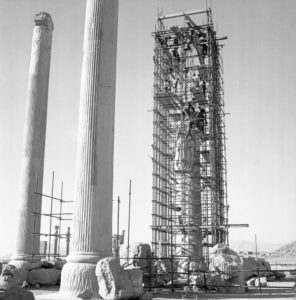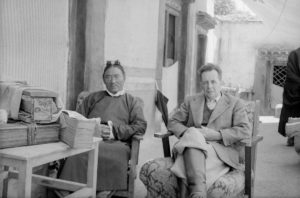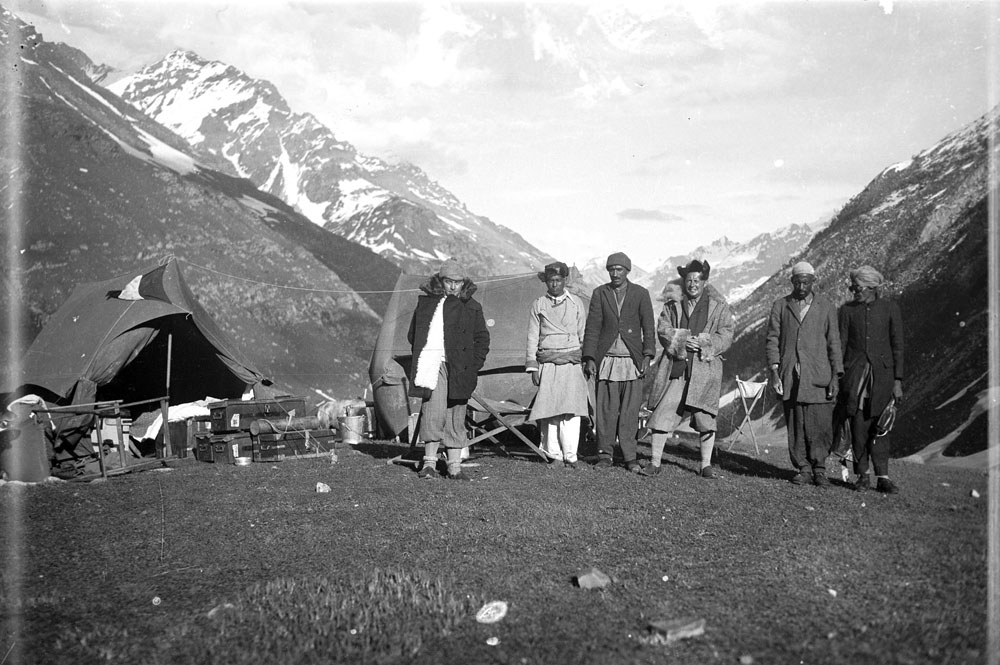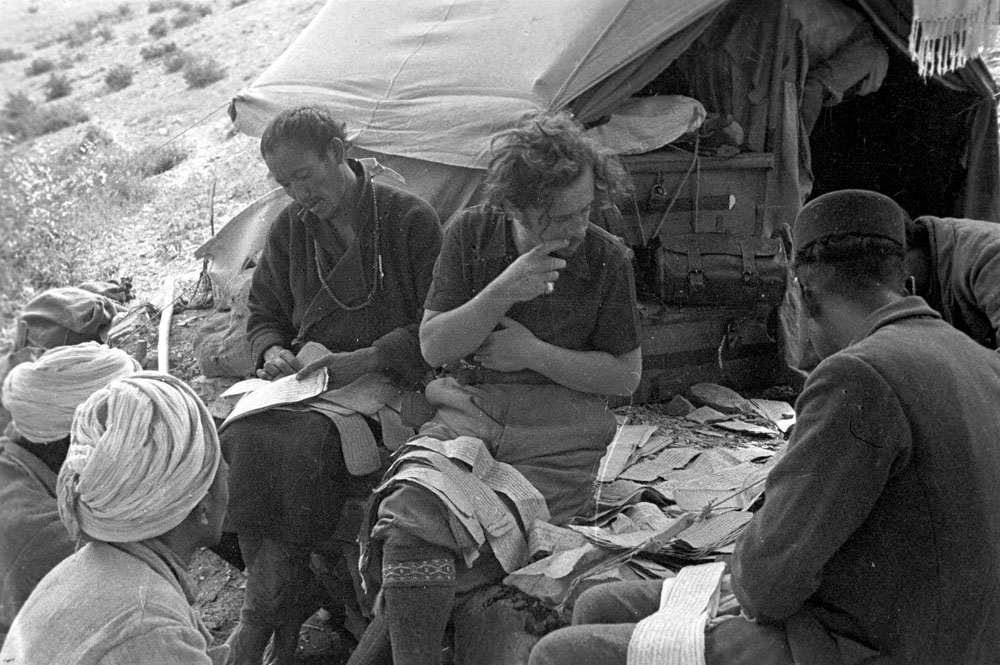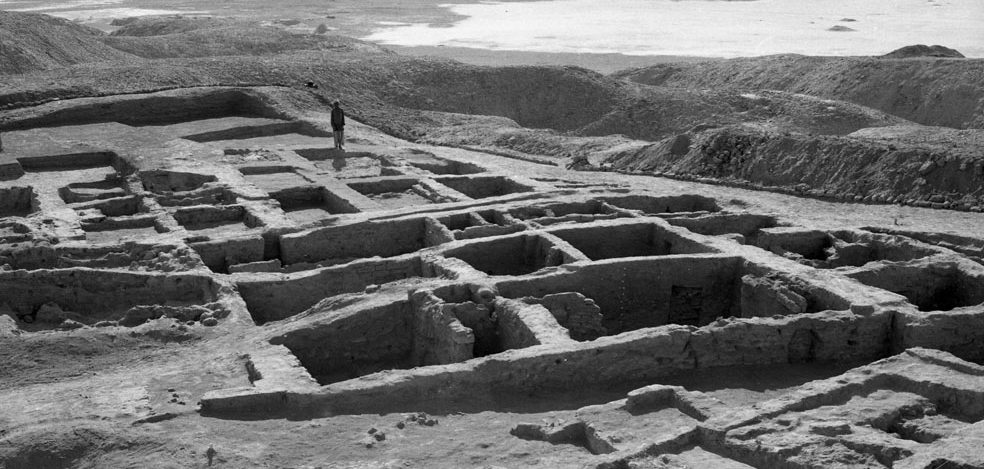
Scientific heritage
The idea of creating an institute dedicated largely to cultural relations between Italy and Asian countries, with an initial focus on India, came from talks held by Giuseppe Tucci with various interlocutors during his stay as a teacher in the universities of Shantiniketan, Dhaka and Kolkata, between 1925 and 1931. The proposal found fertile ground in the Italian government, and thanks also to support from philosopher Giovanni Gentile the Italian Institute for the Middle and Far East opened its doors at the end of 1933. In February 1934 Tucci, who was one of the two vice-presidents, gave a speech entitled “The East in contemporary culture” in which he presented the institute’s political programme. Tucci emphasized the need to adopt a completely new attitude towards Eastern peoples, criticizing the standard academic approach to oriental studies and proposing mutual understanding as the only possible foundation for economic and political relations.
Until the outbreak of the World War II, IsMEO mainly organized language courses and teaching exchanges, awarded scholarships, and edited periodicals aimed at educated but not specialist audiences, such as the organizations Asiatica and Yamato. A small oriental art museum was also opened; it closed in 1944, when the institute’s activities were suspended. When the institute reopened in 1947, with Tucci as president, it rapidly expanded its field of action, organizing expeditions to Tibet (1948) and Nepal (1952 and 1954); from 1955 onwards agreements were made with the governments of Pakistan, Afghanistan and Iran for the conduction of archaeological excavations and restoration of monuments in several historically important locations, such as the Swat Valley, Ghazni, Isfahan and Persepolis. In the following years similar accords were reached with other countries, including Nepal, Thailand, Oman, Yemen and Turkmenistan, making the institute an essential reference point for Italian research activities in Asia. With the backing of the Ministry of Public Education, the National Museum of Oriental Art was instituted in 1957 to house the finds from excavations. For reasons of funding, in 1995 the institute was merged with the Italian-African Institute, giving rise to the Italian Institute for Africa and the East.
THE ITALIAN-AFRICAN INSTITUTE
The origins of the Italian-African Institute date back to 1906, when the Italian Colonial Institute was created; in 1947 it became the Italian Institute for Africa. After it became the Italian-African Institute in 1971, this organization conducted basic research in all sectors of African studies, with a particular focus on humanities and social sciences. The prestigious institute offices in Via Aldrovandi, Rome – equipped with well-stocked library – were the centre of intense cultural activity. Close contacts and frequent exchanges with African countries were maintained through study missions, as well as language courses at the Rome headquarters. Thanks to this activity, the institute was for many years the reference point for researchers of African nationality present in Rome for periods of study. The institute was particularly effective during the presidency of Tullia Carettoni, who directed it until it merged with a new body, IsIAO, established in 1995 (under Law n° 505).
.
Under Carettoni’s directorship, “Africa Day” was celebrated at the Via Aldrovandi headquarters, with the participation of the President of the Italian Republic and the ambassadors of African countries. The Italian-African Institute’s wide spectrum of activities was reflected in “Africa”, an international periodical aimed at promoting research and practical collaboration between Italian and African scholars, with contributions from the foremost Italian and overseas African studies scholars, ranging from history to political and juridical institutions, ethnology, archaeology and anthropology.
The Italian Institute for Africa and the East – IsIAO
The Italian Institute for Africa and the East was established by Law n° 505 (1995) to maximize national initiatives and resources in the fields previously covered by the Italian Institute for the Middle and Far East and the Italian-African Institute. Its work followed the path traced by the two institutes which merged to create it, promoting Italy’s cultural relations with the countries of these two continents by means of international conferences, exhibitions, publications, archaeological excavations, restoration work and historical, linguistic and philological research projects. Notwithstanding difficulties posed by the changed international situation, the institute strived to keep Italian research activities alive in areas such as Pakistan and Afghanistan, as well as extending archaeological initiatives to various Central Asian and Caucasian states in ex-Soviet Union territories. New research was encouraged in Africa, especially in Mediterranean African countries – Egypt and Libya – and in Ethiopia, while study and training activities continued in West Africa. However, the institute suffered from a changed national political attitude compared to previous decades, which no longer saw culture as a useful tool for the pursuit of diplomatic and/or economic aims. Thus – following a significant progressive decrease in public contributions – it was closed in November 2011.



